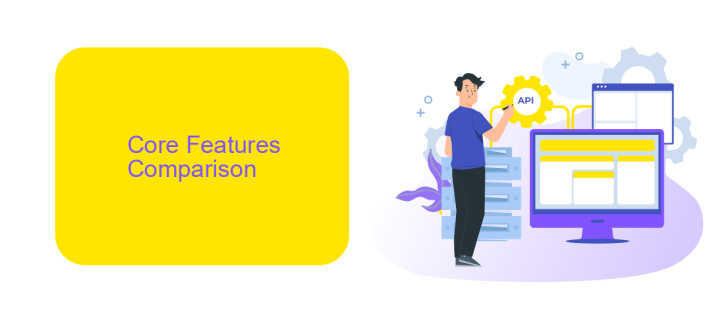Ibm BPM Vs Pega Vs Appian
In the rapidly evolving landscape of business process management (BPM), organizations are turning to advanced platforms to streamline operations and enhance efficiency. Among the leading BPM solutions, IBM BPM, Pega, and Appian stand out for their unique features and capabilities. This article provides a comparative analysis of these three platforms, helping businesses make informed decisions on which solution best meets their needs.
Introduction
In today's dynamic business environment, selecting the right Business Process Management (BPM) tool is crucial for operational efficiency and agility. Among the leading BPM solutions, IBM BPM, Pega, and Appian stand out due to their robust features and capabilities. This article aims to provide a comparative analysis of these three platforms to help organizations make an informed decision.
- IBM BPM: Known for its extensive integration capabilities and scalability.
- Pega: Offers powerful case management and decisioning features.
- Appian: Excels in rapid application development and user-friendly interfaces.
Each of these BPM tools brings unique strengths to the table. For example, IBM BPM integrates seamlessly with various enterprise systems, enhancing workflow automation. Pega's advanced analytics and AI-driven insights make it a strong contender for complex business processes. Appian, on the other hand, is favored for its low-code development environment, enabling faster deployment. Additionally, services like ApiX-Drive can further streamline integration processes, making it easier to connect these BPM platforms with other business applications.
Core Features Comparison

IBM BPM, Pega, and Appian are leading platforms in the Business Process Management (BPM) space, each offering unique core features. IBM BPM excels in providing robust process modeling tools and advanced analytics, making it ideal for complex enterprise environments. Pega stands out with its AI-driven decision-making capabilities and dynamic case management, which streamline processes and enhance customer engagement. Appian, on the other hand, is known for its low-code development environment, enabling rapid application development and deployment.
When it comes to integration capabilities, all three platforms offer strong support, but with distinct approaches. IBM BPM provides extensive integration options through its built-in connectors and APIs. Pega simplifies integration with its unified platform and pre-built connectors. Appian leverages its low-code integration capabilities, making it easy to connect with various systems. For businesses looking to further streamline integrations, services like ApiX-Drive can be invaluable. ApiX-Drive allows seamless integration between different platforms, enhancing the overall efficiency and effectiveness of BPM solutions.
Use Cases and Industries

IBM BPM, Pega, and Appian serve various industries with their robust Business Process Management (BPM) solutions. Each platform has carved a niche in specific sectors due to its unique capabilities and features.
- IBM BPM: Widely used in finance, healthcare, and manufacturing, IBM BPM excels in complex process automation and integration with legacy systems.
- Pega: Known for its strength in customer relationship management and case management, Pega is popular in banking, insurance, and telecommunications.
- Appian: Favored in government, education, and retail sectors, Appian offers rapid application development and a user-friendly interface.
For businesses requiring seamless integrations, services like ApiX-Drive can be invaluable. ApiX-Drive facilitates the connection between various software applications, enhancing the capabilities of BPM platforms by ensuring smooth data flow and process automation across different systems.
Pricing and Licensing

When comparing IBM BPM, Pega, and Appian, understanding their pricing and licensing structures is crucial. IBM BPM typically offers a flexible pricing model based on user licenses and server capacity. It caters to both small and large enterprises with scalable options.
Pega provides a more customized pricing approach, often tailored to the specific needs of an organization. This can include user-based licensing, as well as additional costs for advanced features and integrations. Pega's pricing strategy aims to offer value through its extensive capabilities and robust support.
- IBM BPM: User licenses, server capacity, scalable options
- Pega: Customized pricing, user-based licensing, advanced features
- Appian: Subscription-based, user or application-based pricing
Appian, on the other hand, adopts a subscription-based pricing model. It offers both user and application-based pricing, making it flexible for various business sizes and requirements. For those looking to integrate these platforms seamlessly, services like ApiX-Drive can be invaluable, offering streamlined integration solutions to enhance operational efficiency.
Conclusion
In conclusion, choosing between IBM BPM, Pega, and Appian depends largely on your organization's specific needs and goals. IBM BPM offers robust process management capabilities suited for large enterprises with complex workflows. Pega stands out for its advanced decision-making tools and customer engagement features, making it ideal for businesses focused on customer-centric processes. Appian, on the other hand, excels in rapid application development and ease of use, making it a strong contender for organizations looking for quick deployment and flexibility.
Additionally, integrating these platforms with existing systems can be streamlined using tools like ApiX-Drive. ApiX-Drive facilitates seamless integration by connecting various applications and automating data flows, thus enhancing the overall efficiency of your chosen BPM solution. Ultimately, the best choice will depend on evaluating each platform's strengths in the context of your business requirements and integration needs.


FAQ
What are the primary differences between IBM BPM, Pega, and Appian?
Which platform is the easiest to use for non-developers?
How do these platforms handle integration with other systems?
What are the deployment options for IBM BPM, Pega, and Appian?
How can businesses automate and integrate processes within these platforms?
Routine tasks take a lot of time from employees? Do they burn out, do not have enough working day for the main duties and important things? Do you understand that the only way out of this situation in modern realities is automation? Try Apix-Drive for free and make sure that the online connector in 5 minutes of setting up integration will remove a significant part of the routine from your life and free up time for you and your employees.

